15 Ng. 100 Đ. Nguyễn Xiển, Thanh Xuân Nam, Thanh Xuân, Hà Nội 100000
Imagine standing at the crossroads of ancient pilgrimage routes, where the air is thin and crisp, carrying the scent of juniper incense and the murmur of sacred chants. Here, colossal monasteries rise majestically from the high-altitude plains, their golden roofs shimmering under an intense blue sky. This is Shigatse (Rikaze), Tibet's second-largest city and the traditional seat of the Panchen Lamas, standing as a vital cultural and economic hub in the heart of the Tibetan Plateau. More than just a stop on the way to Everest, Shigatse offers a profound immersion into a distinct facet of Tibetan Buddhism, a vibrant local culture, and breathtaking landscapes that stretch towards the world's highest peaks. If you're seeking a journey that blends deep spiritual encounters with unparalleled adventure amidst the towering Himalayas, Shigatse is an essential destination on your Tibetan odyssey.
Shigatse holds a unique and profound position in the spiritual hierarchy of Tibet, primarily due to its connection with the lineage of the Panchen Lamas.
While Lhasa is the seat of the Dalai Lamas, Shigatse is the traditional home of the Panchen Lamas, considered the second-highest spiritual authority in Tibetan Buddhism's Gelug school. The Panchen Lama is believed to be the incarnation of Amitabha Buddha (Buddha of Infinite Light), and his role is deeply interconnected with that of the Dalai Lama. Traditionally, they have recognized each other's incarnations, forming a vital spiritual partnership.
This dual spiritual authority gives Shigatse a distinct religious ambiance. The city's most prominent landmark, Tashilhunpo Monastery, serves as the traditional monastic seat of the Panchen Lamas, a monumental complex that rivals the Potala Palace in its grandeur and spiritual significance.
Shigatse's strategic location in the Nyangchu River valley made it a crucial stop on ancient trade routes, particularly the historic Nepal-Tibet Trade Route. For centuries, goods, ideas, and pilgrims flowed through this city, connecting Tibet with Nepal, India, and beyond. This history has endowed Shigatse with a diverse cultural fabric, evident in its architecture, markets, and the blend of influences from various regions.
The city has also played a significant role in Tibetan political history, often acting as a counterbalancing force to Lhasa, reflecting the complex interplay of religious and temporal powers on the plateau. Today, it remains an important administrative and commercial center for the surrounding region.
Like Lhasa, Shigatse is permeated by the pervasive influence of Tibetan Buddhism. From the elderly pilgrims circumambulating the monastery walls, prayer beads in hand, to the young monks studying ancient scriptures, the city's rhythm is set by faith. The air is often filled with the gentle scent of juniper incense and the soft murmur of mantras, creating a tranquil yet deeply spiritual atmosphere that invites visitors to slow down and observe. This deep devotion is not merely ceremonial; it's a living, breathing part of daily life.
Shigatse offers a captivating blend of historical monasteries, vibrant markets, and serves as the launching point for the ultimate Himalayan adventure.
The undisputed jewel of Shigatse, Tashilhunpo Monastery is one of the largest and most historically significant monasteries in Tibet. Founded in 1447 by Gendun Drup, the First Dalai Lama, it later became the traditional seat of the Panchen Lamas.
Architectural Grandeur: The monastery is a sprawling complex of golden-roofed assembly halls, chapels, living quarters for monks, and towering stupas. Its distinctive red and white walls shimmer against the backdrop of the mountains.
Maitreya Chapel: The highlight is the magnificent Maitreya Chapel, which houses a colossal, 26-meter-high (85-foot) gilded statue of the Future Buddha, Maitreya. Adorned with precious jewels, it's one of the largest Buddha statues in the world, awe-inspiring in its scale and artistry.
Stupa Tombs: Within the monastery, you'll find the jeweled stupa tombs containing the embalmed bodies of past Panchen Lamas, adorned with gold and precious stones, representing centuries of devotion.
Monastic Life: Tashilhunpo remains an active monastery, home to hundreds of monks. Visitors can observe their daily rituals, prayers, and sometimes even their lively philosophical debates (though less publicly famous than Sera's debates in Lhasa).
The Shigatse Dzong is a historical fortress that once served as the administrative center of Shigatse. Though largely destroyed during the Cultural Revolution, it has been meticulously rebuilt, reminiscent of the original Potala Palace in Lhasa (which it predates in concept).
Panoramic Views: Situated on a hilltop overlooking the city, the Dzong offers excellent panoramic views of Shigatse city, Tashilhunpo Monastery, and the surrounding Nyangchu River valley.
Historical Significance: It provides a glimpse into the region's political history and served as an important vantage point.
Around the base of Tashilhunpo Monastery and within the older sections of Shigatse city, you'll find the vibrant local market and traditional streets.
Pilgrim's Circuit: Like Lhasa's Barkhor, a pilgrim's circuit (kora) often surrounds Tashilhunpo Monastery, filled with devout locals.
Local Market: A bustling marketplace offers a wide array of goods, from traditional Tibetan handicrafts, religious items, and thangkas to local produce, daily necessities, and souvenirs. It's a fantastic place for people-watching and experiencing daily Tibetan life.
Tibetan Teahouses: Find cozy teahouses where you can sit among locals, sip sweet tea or yak butter tea, and soak in the authentic atmosphere.
For many, Shigatse serves as the essential gateway to the ultimate adventure: a journey to Everest Base Camp (EBC) on the Tibetan side. Located deep within the Himalayas, this is the closest you can get to the world's highest peak without embarking on a mountaineering expedition.
The Journey: The drive from Shigatse to EBC (approx. 8-10 hours, depending on conditions and stops) is an adventure in itself, traversing breathtaking high-altitude passes (like Gyatso La at 5,248m or 17,218 ft), vast arid plains, and remote Tibetan villages.
Rongbuk Monastery: The highest monastery in the world, Rongbuk Monastery (Rongpu Si), sits just a few kilometers from EBC, offering stunning views of Everest's North Face. It provides basic guesthouse accommodation for visitors.
The View of Everest: From EBC (5,200m / 17,060 ft), you'll witness the majestic North Face of Mount Everest (Mount Qomolangma in Tibetan) in all its glory, especially at sunrise or sunset when the light paints the peak in ethereal hues.
Permit and Guide Required: Access to EBC requires special permits, and all foreign travelers must be accompanied by a licensed guide and travel in a private vehicle arranged by an authorized tour operator.
Altitude Challenge: EBC is at a very high altitude, requiring careful acclimatization and attention to AMS symptoms.
A significant detour from the main Lhasa-Shigatse-Everest route, but well worth it for those interested in Tibetan history and a different school of Buddhism, is Sakya Monastery. It's located southwest of Shigatse.
Sakya School: Sakya is the principal monastery of the Sakya school of Tibetan Buddhism, which historically wielded immense political power in Tibet during the Yuan Dynasty.
Unique Architecture: The monastery has a distinctive grey-striped architecture, earning it the nickname "Grey Earth Monastery." Its massive library of ancient scriptures, some thought to be the largest in the world, is legendary.
Historical Significance: It offers a glimpse into a different lineage of Tibetan Buddhism and its powerful historical role.
Shigatse offers a deep dive into Tibetan culture, reflecting its unique position and the daily lives of its resilient people.
Shigatse, like other parts of Tibet, celebrates various festivals deeply rooted in the Buddhist calendar and local traditions.
Buddha Unfolding Festival: Similar to Lhasa's Shoton Festival, Tashilhunpo Monastery occasionally holds a "Buddha Unfolding" ceremony where a massive Thangka scroll painting of Buddha is unfurled on the monastery walls, attracting thousands of pilgrims.
Tibetan New Year (Losar): Celebrated with fervor, involving special foods, family gatherings, and traditional rituals.
Other Religious Festivals: Various smaller festivals and prayer days throughout the year offer glimpses into monastic life and local devotion.
Shigatse's cuisine is hearty and simple, designed to provide energy in the high-altitude environment, featuring local ingredients.
Yak Butter Tea (酥油茶 - Su You Cha): The ubiquitous, salty, and rich tea made with yak butter, essential for hydration and energy at altitude.
Tsampa (糌粑 - Zang Ba): Roasted barley flour, a staple food, often mixed with yak butter tea into a dough.
Yak Meat: A staple protein, found in stews, dried jerky, or as a key ingredient in hotpot.
Momos (包子 - Bao Zi): Tibetan dumplings, typically filled with yak meat or vegetables, served steamed or fried.
Thukpa (藏面 - Zang Mian): Tibetan noodle soup, warming and filling.
Tibetan Barley Wine (青稞酒 - Qing Ke Jiu): A mildly alcoholic beverage made from highland barley.
Sweet Tea (甜茶 - Tian Cha): Tibetan milk tea, a sweeter alternative to yak butter tea, often found in local teahouses.
Dining in local restaurants and trying dishes from small street vendors offers an authentic culinary experience.
Shigatse is a good place to find authentic Tibetan handicrafts, reflecting the region's artistic heritage.
Tibetan Carpets: Hand-woven carpets with intricate designs and vibrant colors, often using local wool.
Thangka Paintings: Religious scroll paintings depicting Buddhist deities and mandalas, meticulously painted with mineral pigments.
Silver and Turquoise Jewelry: Hand-crafted ornaments, often incorporating coral and amber.
Religious Artifacts: Prayer wheels, mala beads, and other items used in daily Buddhist practice.
The market around Tashilhunpo and the city's central areas are good for Browse and purchasing these items.
The people of Shigatse are primarily Tibetan, known for their warmth, resilience, and deep spiritual devotion. You'll encounter pilgrims from across Tibet, their faces weathered by sun and wind, embodying an unwavering faith. Observing their daily routines, interacting with shopkeepers, and witnessing their spiritual practices offers a profound insight into a way of life deeply rooted in ancient traditions and a challenging environment. Their hospitality, though sometimes expressed subtly, is genuine and heartfelt.
Shigatse's elevation of around 3,800 meters (12,467 feet) means that altitude sickness (AMS) is a significant concern for all visitors. Proper preparation and a measured approach are crucial for a safe and enjoyable journey.
Gradual Acclimatization is Key: Most tours to Shigatse and Everest Base Camp start in Lhasa (3,650m), allowing a few days for your body to acclimatize before ascending further. This gradual approach significantly reduces the risk of severe AMS.
Stay Hydrated: Drink plenty of water throughout the day (at least 3-4 liters). Avoid alcohol, caffeine, and smoking, as these can dehydrate you and exacerbate symptoms.
Rest on Arrival: Upon arrival in Lhasa and then Shigatse, prioritize rest. Avoid strenuous physical activity for the first day or two.
Listen to Your Body: Pay close attention to any symptoms like headache, nausea, dizziness, fatigue, or difficulty sleeping. If symptoms worsen, notify your guide immediately.
Medication: Consult your doctor about prophylactic medications like Diamox (Acetazolamide) before your trip.
Oxygen Supply: Most tour vehicles and hotels in Lhasa and Shigatse are equipped with oxygen cylinders for emergencies or for alleviating mild symptoms.
Avoid Overexertion: Even simple tasks can be more tiring at altitude. Pace yourself, especially when walking up stairs or hills.
Warm Clothing: Dress in layers. Even on sunny days, temperatures can drop quickly, especially at night or at higher elevations like EBC. Keeping warm helps your body cope with the altitude.
Golden Trail Travel prioritizes traveler safety and meticulously plans itineraries to maximize acclimatization, providing guidance and support every step of the way.
Traveling to Tibet, especially to destinations like Shigatse and Everest Base Camp, requires mandatory permits and an organized tour structure for foreign visitors. This makes choosing a reliable and experienced tour operator like Golden Trail Travel not just advisable, but essential.
Tibet Travel Permit (TTP) Expertise: Golden Trail Travel possesses unparalleled expertise in navigating the complex and constantly evolving Tibet Travel Permit (TTP) application process. They handle all the paperwork on your behalf, ensuring a smooth entry into Tibet, which is crucial as foreign travelers cannot visit Tibet independently.
Optimized Acclimatization Itineraries: Your safety and comfort are their top priority. Golden Trail Travel designs itineraries that allow for proper altitude acclimatization, starting from Lhasa and gradually ascending to higher elevations like Shigatse and EBC. They provide guidance on managing AMS and ensure you have access to necessary support.
Seamless Logistics & High-Altitude Preparedness: From securing flight/train tickets within China to providing reliable private vehicles, experienced drivers, and carefully selected accommodations in Tibet, Golden Trail Travel manages every aspect. Their vehicles are equipped for high-altitude travel, and they ensure access to emergency oxygen if needed.
Knowledgeable & Licensed Local Guides: Your journey will be led by experienced, licensed Tibetan guides who speak excellent English. They are not just escorts; they are cultural ambassadors who provide profound insights into Tibetan Buddhism, history, and daily life, enriching every interaction and bringing the ancient sites to life.
Authentic Cultural Immersion: Golden Trail Travel goes beyond standard sightseeing. They arrange opportunities for genuine cultural immersion, such as respectful visits to local Tibetan families, interactions with monks, and experiences like visiting local markets and traditional teahouses that connect you directly with the heart of Tibetan life.
Dedicated 24/7 Support & Safety: With an unwavering commitment to traveler safety and 24/7 support, Golden Trail Travel provides complete peace of mind throughout your journey. They proactively monitor conditions, adapt plans as needed, and ensure you have a comfortable and secure experience in this unique and challenging region.
It's crucial to reiterate that foreign tourists cannot travel independently in Tibet. You must:
Obtain a Tibet Travel Permit (TTP) issued by the Tibet Tourism Bureau.
Travel with a licensed tour guide.
Travel in a private vehicle arranged by a travel agency (for most routes, especially beyond Lhasa).
Have your itinerary pre-arranged and approved by the authorities.
Golden Trail Travel expertly manages all these requirements, making your dream trip to Shigatse and beyond a reality.
Option 1: Central Tibet Immersion: Lhasa, Gyantse & Shigatse (7-8 Days) This itinerary allows for deep exploration of Tibet's cultural heartland, including the main spiritual centers and beautiful landscapes.
Day 1: Arrival in Lhasa & Acclimatization.
Arrive at Lhasa Gonggar Airport (LXA). Transfer to your hotel. Rest and hydrate. Gentle walk around.
Evening: Simple dinner, avoid strenuous activity.
Day 2: Lhasa Exploration: Potala Palace, Jokhang Temple & Barkhor Street.
Morning: Visit Potala Palace.
Afternoon: Explore Jokhang Temple and immerse in Barkhor Street.
Day 3: Lhasa Monasteries: Drepung & Sera.
Morning: Visit Drepung Monastery.
Afternoon: Head to Sera Monastery to witness the monk debates.
Day 4: Lhasa to Gyantse via Yamdrok Lake.
Scenic drive to Yamdrok Lake, one of Tibet's holy lakes. Enjoy stunning turquoise waters.
Continue to Gyantse. Visit the Pelkor Chode Monastery and its unique Kumbum Stupa.
Overnight in Gyantse.
Day 5: Gyantse to Shigatse.
Morning: Explore Gyantse further (e.g., Gyantse Dzong views).
Afternoon: Drive to Shigatse.
Visit Tashilhunpo Monastery, the seat of the Panchen Lamas.
Overnight in Shigatse.
Day 6: Shigatse Exploration & Cultural Immersion.
Morning: Revisit Tashilhunpo or explore Shigatse's local market and Old Town.
Afternoon: Optional: Visit a local workshop or engage in a cultural activity.
Evening: Enjoy a traditional Tibetan dinner.
Day 7-8: Return to Lhasa & Departure.
Morning: Scenic drive back to Lhasa.
Afternoon: Free time in Lhasa for last-minute souvenir shopping or relaxation.
Day 8: Transfer to Lhasa Gonggar Airport (LXA) for onward flight.
Option 2: Everest Base Camp Expedition: Lhasa, Shigatse & EBC (8-10 Days) This is the ultimate adventure for those seeking to witness Mount Everest from its Tibetan side, combining cultural insights with high-altitude challenge.
Days 1-4: Follow the Lhasa Sacred City Discovery itinerary (Day 1-4).
Day 5: Lhasa to Gyantse via Yamdrok Lake.
Drive to Yamdrok Lake.
Continue to Gyantse, visit Pelkor Chode Monastery & Kumbum.
Overnight in Gyantse.
Day 6: Gyantse to Shigatse.
Drive to Shigatse. Visit Tashilhunpo Monastery.
Overnight in Shigatse.
Day 7: Shigatse to Rongbuk Monastery / EBC.
The long and scenic drive to Rongbuk Monastery / Everest Base Camp (EBC). Traverse high passes like Gyatso La.
Arrive at Rongbuk, the highest monastery in the world.
Witness stunning sunset views of Mount Everest.
Overnight in very basic guesthouse near Rongbuk Monastery or at EBC tent camps (seasonal).
Day 8: Everest Base Camp & Back to Shigatse.
Wake up early for sunrise over Mount Everest (weather permitting).
Explore the EBC area (up to designated viewing point).
Drive back to Shigatse.
Overnight in Shigatse.
Day 9-10: Return to Lhasa & Departure.
Scenic drive back to Lhasa.
Day 10: Transfer to Lhasa Gonggar Airport (LXA) for onward flight.
Ready to embark on your unforgettable journey to Shigatse and the Roof of the World? Visit Golden Trail Travel's website to explore their curated Tibet tours and easily book your adventure: https://goldentrailtravel.com/
Shigatse is more than just a destination; it's a profound experience that deepens your understanding of Tibet's vastness, its spiritual heart, and the unwavering resilience of its people. The sheer scale and magnificence of Tashilhunpo Monastery are breathtaking, a testament to centuries of devout craftsmanship and unwavering faith. Standing before the colossal Maitreya Buddha, you can't help but feel a sense of humility and awe.
Beyond the grandeur, it's the subtle moments that truly define Shigatse: the quiet turning of prayer wheels by elderly pilgrims, the bustling energy of the local market, the warmth of a cup of yak butter tea in a simple teahouse. These everyday encounters offer authentic glimpses into a culture that, despite challenges, remains deeply rooted in its ancient traditions.
For adventurers, Shigatse serves as the essential launchpad for the ultimate Himalayan quest: the journey to Everest Base Camp. The drive itself is an epic traverse through some of the world's most dramatic landscapes, culminating in the humbling sight of Mount Everest, a peak that symbolizes both the ultimate challenge and the profound beauty of our planet. This journey is not just about reaching a geographical point; it's a test of endurance, a triumph of spirit, and an unforgettable encounter with the world's highest natural wonder.
Whether you're drawn by the spiritual aura of its monasteries, the vibrant pulse of its culture, or the irresistible call of the Himalayas, Shigatse promises an unforgettable and deeply enriching experience. It's a place where faith moves mountains, and the pursuit of both spiritual enlightenment and physical challenge converge, leaving an indelible mark on your memory and a renewed sense of wonder in your soul.
Q1: Where is Shigatse located? A1: Shigatse is the second-largest city in the Tibet Autonomous Region of China, located southwest of Lhasa at an altitude of approximately 3,800 meters (12,467 feet) above sea level. It is situated in the fertile Nyangchu River valley.
Q2: What is the best time to visit Shigatse? A2: The best time to visit Shigatse is generally from April to October. These months offer the most pleasant weather for sightseeing and the best conditions for traveling to higher altitudes like Everest Base Camp. May, June, September, and October often provide clearer skies for mountain views.
Q3: How do I get to Shigatse? A3: The most common way to get to Shigatse is by private car/tour vehicle from Lhasa (approx. 5-6 hours drive), often including stops at Yamdrok Lake and Gyantse. There is also a train connecting Lhasa to Shigatse. Foreign travelers must be part of an organized tour with a licensed guide and vehicle. Golden Trail Travel arranges all necessary transport.
Q4: What are the main attractions in Shigatse? A4: The primary attraction is Tashilhunpo Monastery, the traditional seat of the Panchen Lamas. The Shigatse Dzong offers city views. For many, Shigatse is a gateway to Everest Base Camp (EBC). Sakya Monastery is also a significant site a few hours' drive southwest.
Q5: How long should I plan to stay in Shigatse? A5: You'll typically spend 1-2 nights in Shigatse on a multi-day tour from Lhasa, especially if going to Everest Base Camp. If you plan to explore the city more deeply or visit Sakya Monastery, a longer stay might be considered.
Q6: What about altitude sickness in Shigatse and beyond to EBC? A6: Shigatse is at 3,800m, and Everest Base Camp is at 5,200m. Altitude sickness (AMS) is a definite concern. It's crucial to acclimatize gradually in Lhasa (3,650m) for 2-3 days before heading to Shigatse and then EBC. Stay hydrated, rest, and follow your guide's advice. Golden Trail Travel prioritizes acclimatization in their itineraries.
Q7: Do I need special permits to visit Shigatse or Everest Base Camp? A7: Yes. Foreign travelers need a Tibet Travel Permit (TTP) to enter Tibet, which is arranged by a licensed tour operator like Golden Trail Travel. For Everest Base Camp, you will need additional permits (Frontier Pass, Everest National Park Permit), all of which your tour operator will secure for you.
Q8: What Tibetan food specialties should I try in Shigatse? A8: In Shigatse, try local favorites like Yak Butter Tea (Su You Cha), Tsampa (Zang Ba), various Yak meat dishes (including hotpot), Momos (Tibetan dumplings), and Tibetan Noodle Soup (Thukpa).
Q9: Can I trek or climb Mount Everest from the Tibetan side? A9: For regular tourists, you can only visit the designated Everest Base Camp (EBC) viewing area. To trek beyond EBC or attempt to climb Everest requires highly specialized permits, equipment, and experienced mountaineering teams, which are separate from standard tourist permits.
Q10: What cultural etiquette should I be aware of in Shigatse? A10: When visiting monasteries, dress modestly (shoulders and knees covered). Always walk clockwise around religious sites (monasteries, stupas, prayer wheels). Do not take photos inside chapels or monasteries unless explicitly permitted by your guide or a sign. Be respectful when interacting with monks and local people.
"Our trip to Shigatse was an incredible journey to the heart of Tibet. Tashilhunpo Monastery is absolutely stunning, truly a masterpiece of architecture and devotion. Golden Trail Travel expertly handled all our permits and logistics, making our experience stress-free and truly unforgettable. Our guide was a treasure, sharing so much about Tibetan culture." — Eleanor V., USA
"Shigatse was a crucial stop on our way to Everest Base Camp, and it exceeded our expectations. Tashilhunpo is breathtaking. Golden Trail Travel ensured our acclimatization was smooth, and their support for the EBC journey was top-notch. It felt like a true adventure with complete peace of mind." — Dr. Anya Sharma, India
"The sheer scale of the Maitreya Buddha statue at Tashilhunpo is something I'll never forget. Golden Trail Travel's itinerary was perfect, allowing us enough time to explore without feeling rushed. Their knowledge of the region and dedication to customer safety were excellent. Definitely the go-to for Tibet tours!" — Michael W., UK
"We loved the vibrant atmosphere of Shigatse's market and the spiritual energy around the monastery. Golden Trail Travel's team was fantastic, making sure we were comfortable at altitude and providing us with incredible insights into Tibetan life. The entire trip was seamless and profoundly moving." — The Dubois Family, France
"From the moment we inquired about a Tibet trip, Golden Trail Travel was professional and responsive. Their Shigatse and EBC tour was perfectly organized. Our guide was knowledgeable and kind, and the drivers were excellent. We felt completely safe and had the most amazing time on the Roof of the World. Couldn't recommend them more!" — Li Mei and Family, Singapore

.jpg)
That era is over. The rise of the electric bicycle has fundamentally redefined travel here. E-Bike Vietnam Cycling Holidays offer a revolutionary path, making the country’s most challenging and breathtaking routes, such as the legendary Ha Giang Loop and the Ho Chi Minh Trail, fully accessible to riders of all fitness levels. The E-Bike transforms the journey from a feat of pure endurance into an immersive cultural and scenic delight, allowing you to achieve a profound feeling of conquest while channeling your energy into savoring the profound closeness to nature and the genuine warmth of the local communities.
October 06, 2025
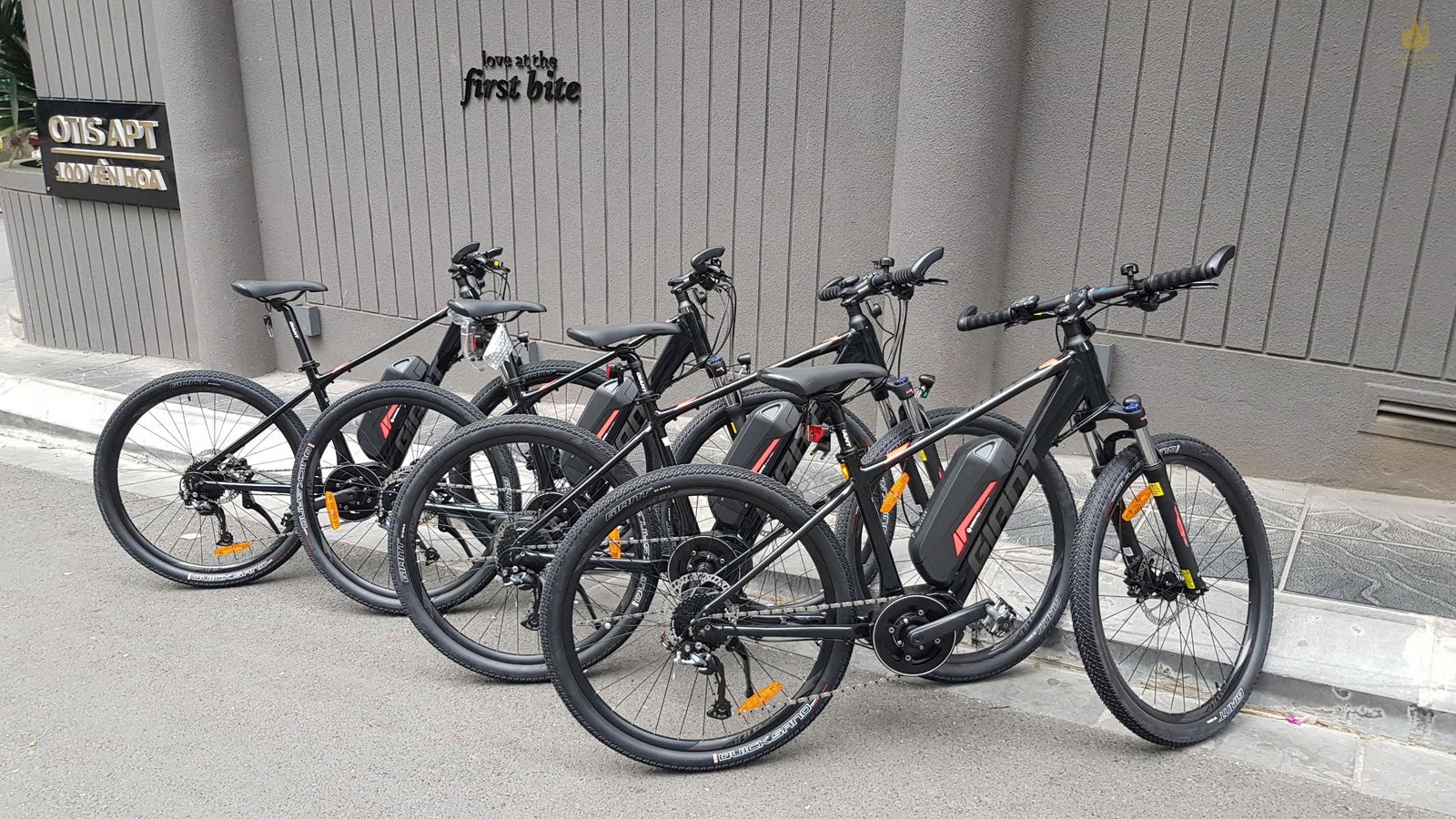
Vietnam, a country famed for its spectacular mountain passes, lush rice terraces, and complex network of historic trails, has long been a dream destination for cyclists. Yet, its challenging geography—characterized by scorching heat, punishing humidity, and immense vertical climbs—often reserves the most breathtaking routes for only the fittest elite. This barrier has now been shattered. The advent of E-Bikes Cycling Vietnam has democratized the adventure, making the country’s most remote and beautiful landscapes accessible to riders of all ages and fitness levels.
October 06, 2025
.jpg)
For the dedicated gravel cyclist, Southeast Asia represents the pinnacle of mixed-terrain exploration. While individual countries offer stunning challenges, the true masterpiece lies in combining them. The cross-border adventure spanning Gravel bike riding in Vietnam and Laos is an unparalleled journey, seamlessly blending the soaring karst mountains of Northern Vietnam with the quiet, forested plateaus and historical trails of Laos.
October 06, 2025
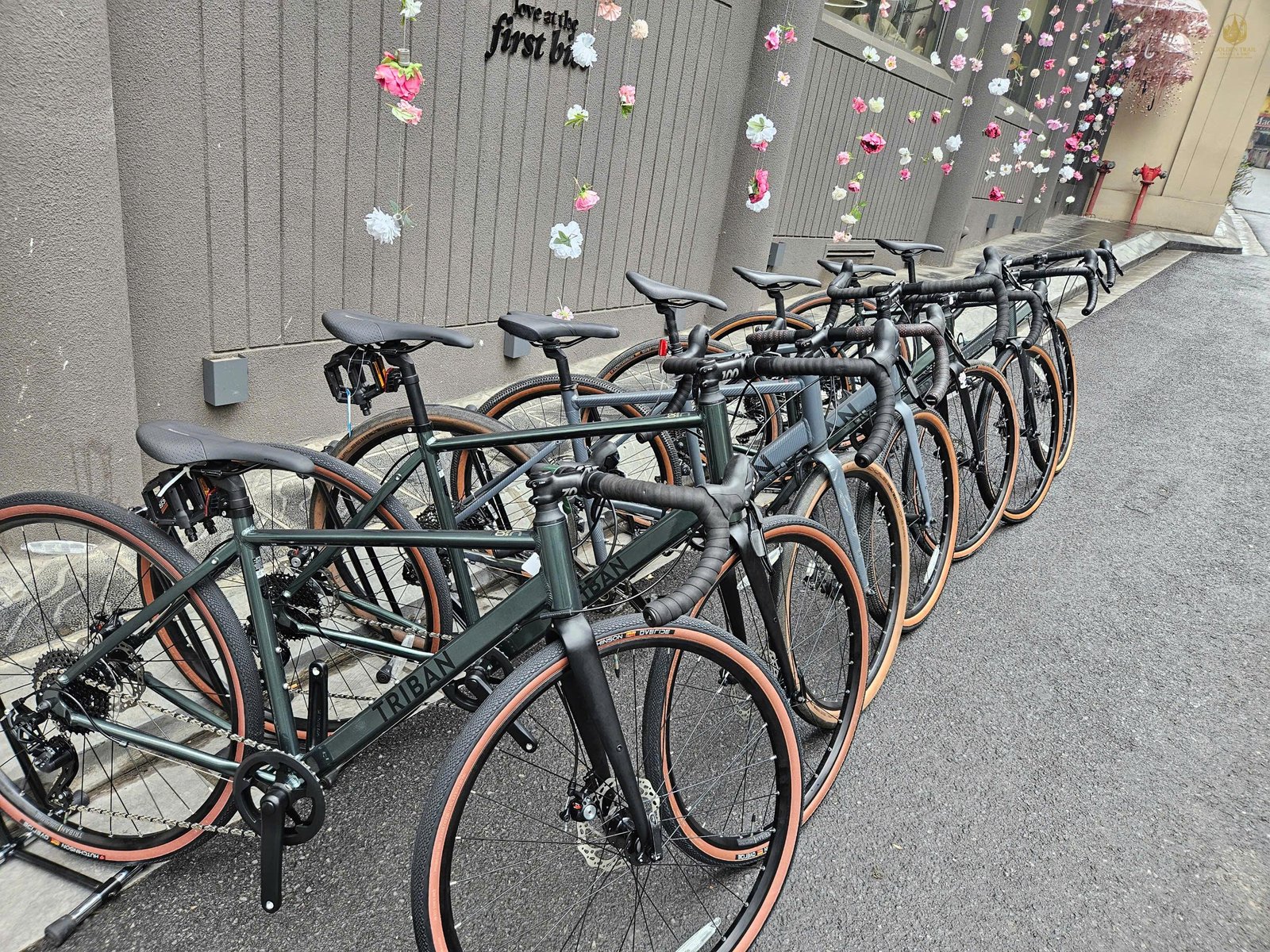
The Ho Chi Minh Trail (HCT)—Đường Trường Sơn in Vietnamese—is more than just a route; it is a legendary tapestry woven from history, endurance, and raw, untamed landscape. While many know the HCT as a symbol of wartime resilience, today it represents the ultimate pilgrimage for the modern adventurer. Forget crowded highways and tourist buses
October 06, 2025

Vietnam is not merely a destination; it is an epic, sensory overload, a land waiting to be discovered inch by inch. While motorbike journeys and bus tours follow the predictable highways, the true soul of this nation—its quiet valleys, timeless hamlets, and untamed mountains—is revealed only to those who dare to take the dirt road.
October 06, 2025

What to Bring on a Vietnam Bike Ride? It is important that the clothing you take on your cycling tour is appropriate for the trip you have chosen. There is a fine balance between taking too much and too little, especially considering that you need to equip yourself for differing levels of physical exertion and also for a range of climatic conditions.
September 09, 2025
.jpg)
Discover the magic of a Vietnam cycling holiday. Explore breathtaking landscapes, immerse yourself in local culture, and embark on an unforgettable adventure through mountains, coastlines, and deltas. Book your dream cycling trip today.
September 05, 2025
.jpg)
Embark on an unforgettable bicycle tour in Vietnam. Explore breathtaking landscapes, immerse yourself in local culture, and experience the ultimate cycling adventure through mountains, coastlines, and deltas. Book your dream bike trip today.
September 05, 2025
.jpg)
Embark on an unforgettable bike tour in Vietnam. Explore breathtaking landscapes, immerse yourself in local culture, and experience the ultimate cycling adventure through mountains, coastlines, and deltas. Book your dream bike trip today.
September 05, 2025
.jpg)
Discover the magic of a Vietnam cycling tour. Explore breathtaking landscapes, immerse yourself in local culture, and embark on an unforgettable adventure through mountains, coastlines, and deltas. Book your dream cycling trip today.
September 05, 2025
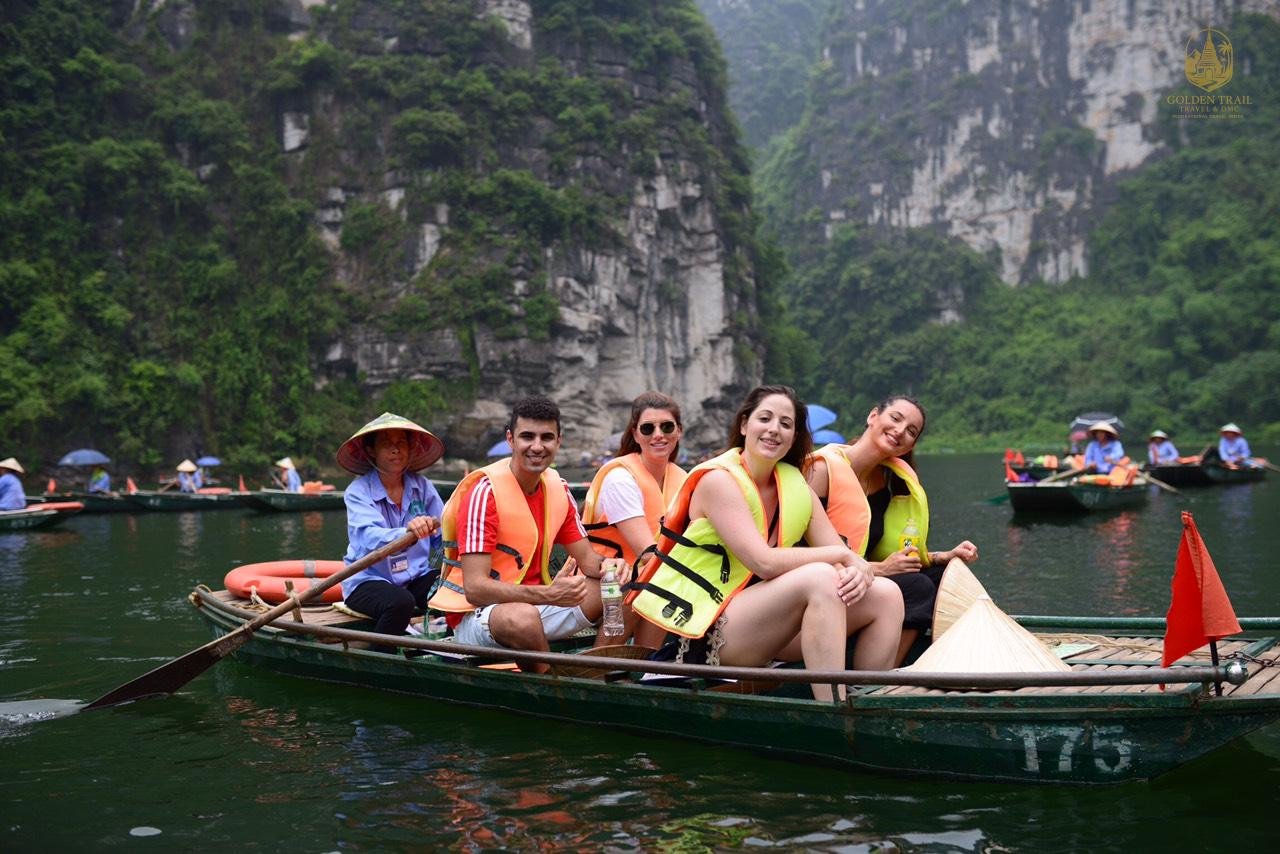
Embark on a serene Ninh Binh boat tour and discover the "Halong Bay on land." Glide through mystical caves and stunning limestone karsts in Tam Coc, Trang An, and Van Long. Book your unforgettable journey with Golden Trail Travel & DMC
August 29, 2025
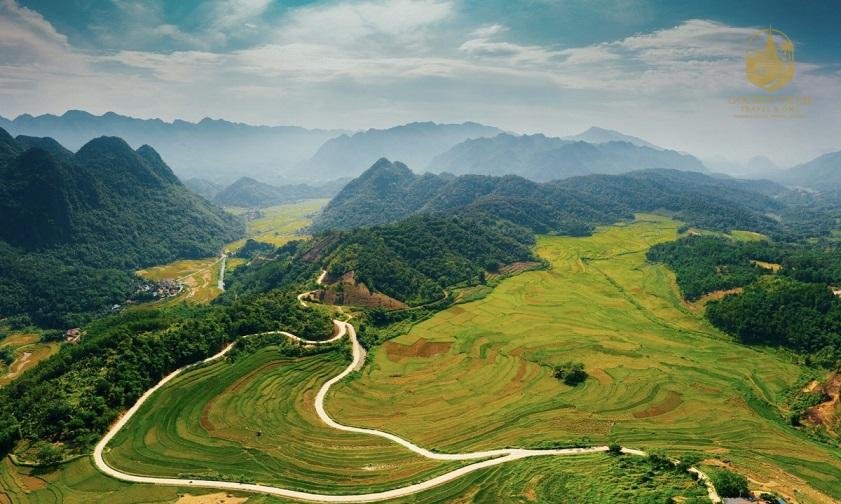
Discover the serene beauty of Pu Luong valley. Trek through lush terraced fields, experience authentic local life, and witness breathtaking landscapes. Book your Pu Luong tour with Golden Trail Travel & DMC.
August 29, 2025
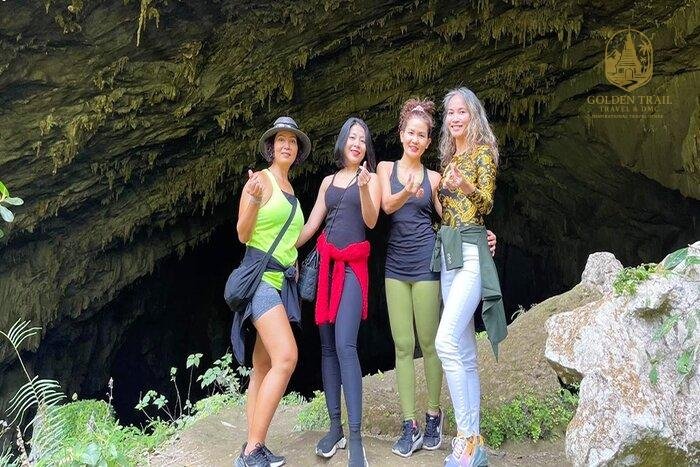
Journey into the heart of Pu Luong to Kho Muong Cave. Trek through stunning landscapes, explore a magnificent bat cave, and experience an authentic adventure. Book your tour with Golden Trail Travel & DMC.
August 29, 2025
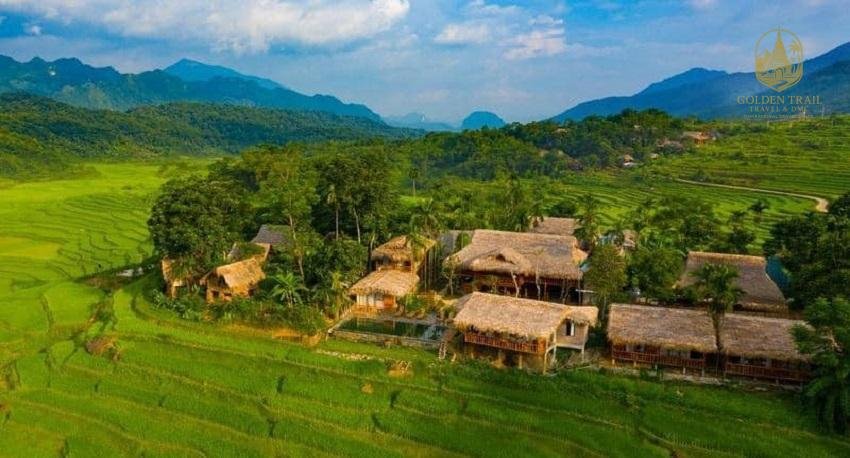
Discover the breathtaking views and authentic culture of Don village in Pu Luong. Trek to its magnificent viewpoints, experience local life, and witness stunning sunrises and sunsets. Book your tour with Golden Trail Travel & DMC.
August 29, 2025
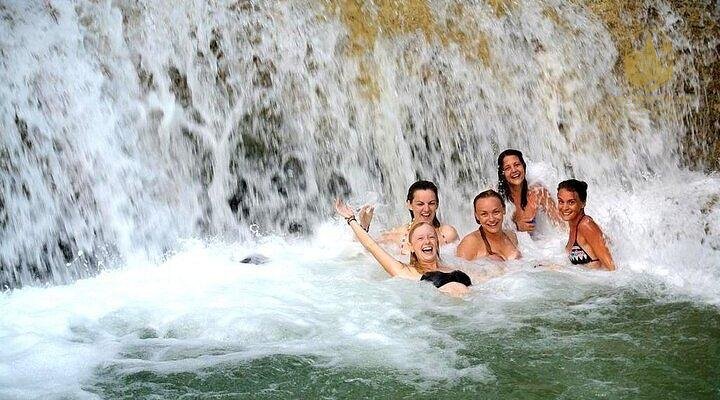
Discover the serene beauty of Hieu village & waterfall. Trek through stunning landscapes, swim in natural pools, and experience authentic local life. Book your adventure with Golden Trail Travel & DMC.
August 29, 2025

Discover the hidden gem of Kho Muong village in Pu Luong. Trek through stunning landscapes, explore a magnificent cave, and experience authentic local life. Book your adventure with Golden Trail Travel & DMC.
August 29, 2025
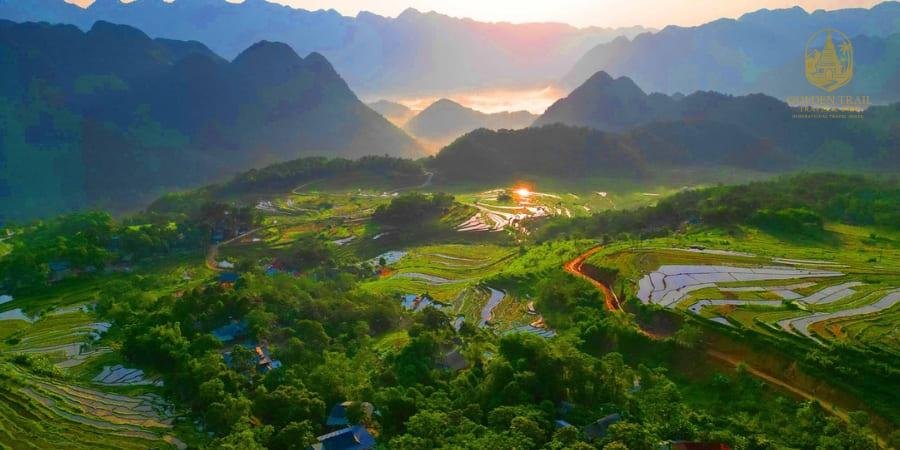
Witness the magic of a Pu Luong sunrise/sunset. Trek to the best viewpoints and experience the breathtaking colors, peace, and natural beauty. Book your Pu Luong tour with Golden Trail Travel & DMC.
August 29, 2025
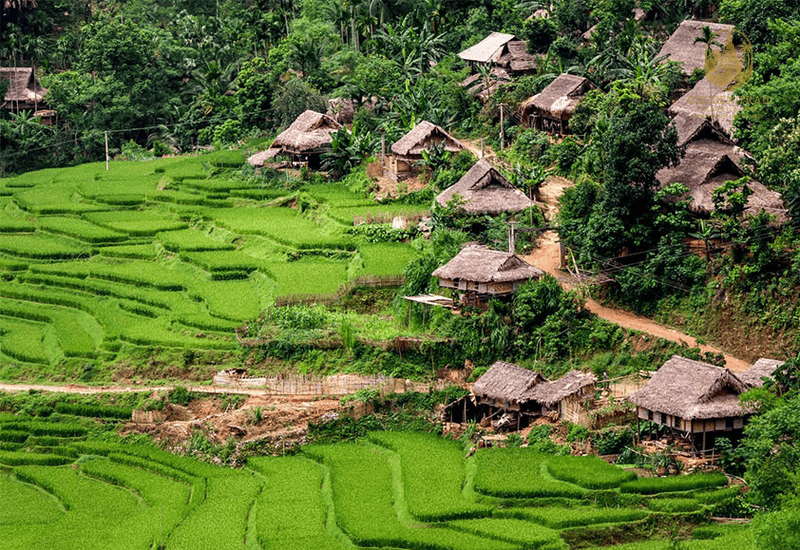
Journey into the soul of Pu Luong. Explore ethnic villages Pu Luong to experience a deep connection with local culture, life, and nature. Book an authentic tour with Golden Trail Travel & DMC.
August 29, 2025
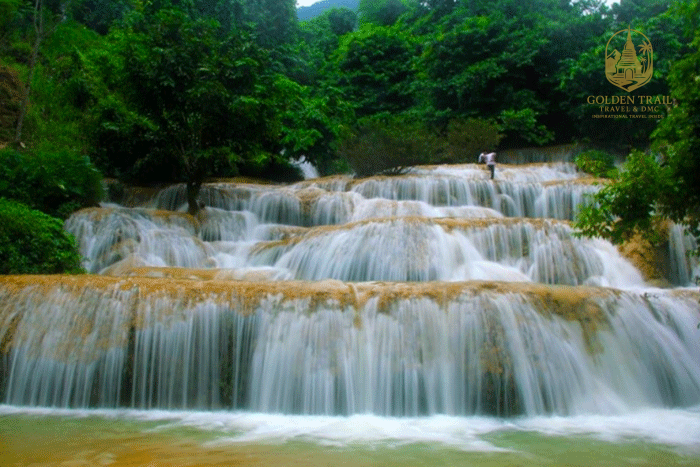
Discover the heart of Pu Luong with a trek to its majestic waterfall. Experience the ultimate journey of peace, conquest, and natural beauty. Book your Pu Luong waterfall tour with Golden Trail Travel & DMC.
August 29, 2025
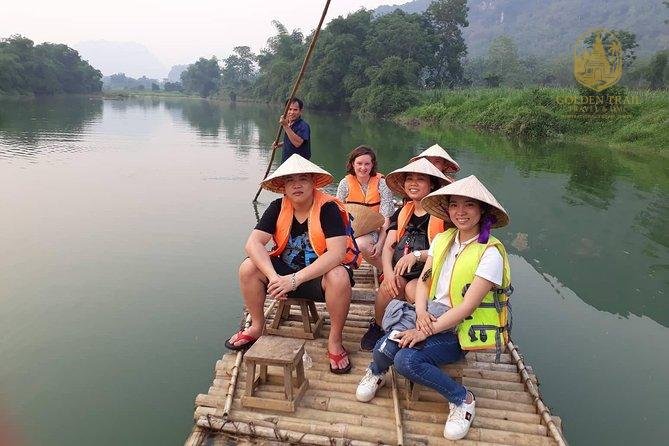
Drift into serenity with bamboo rafting Pu Luong. Discover the tranquility of the Cham Stream, iconic waterwheels, and lush landscapes. Book your unforgettable tour with Golden Trail Travel & DMC.
August 29, 2025